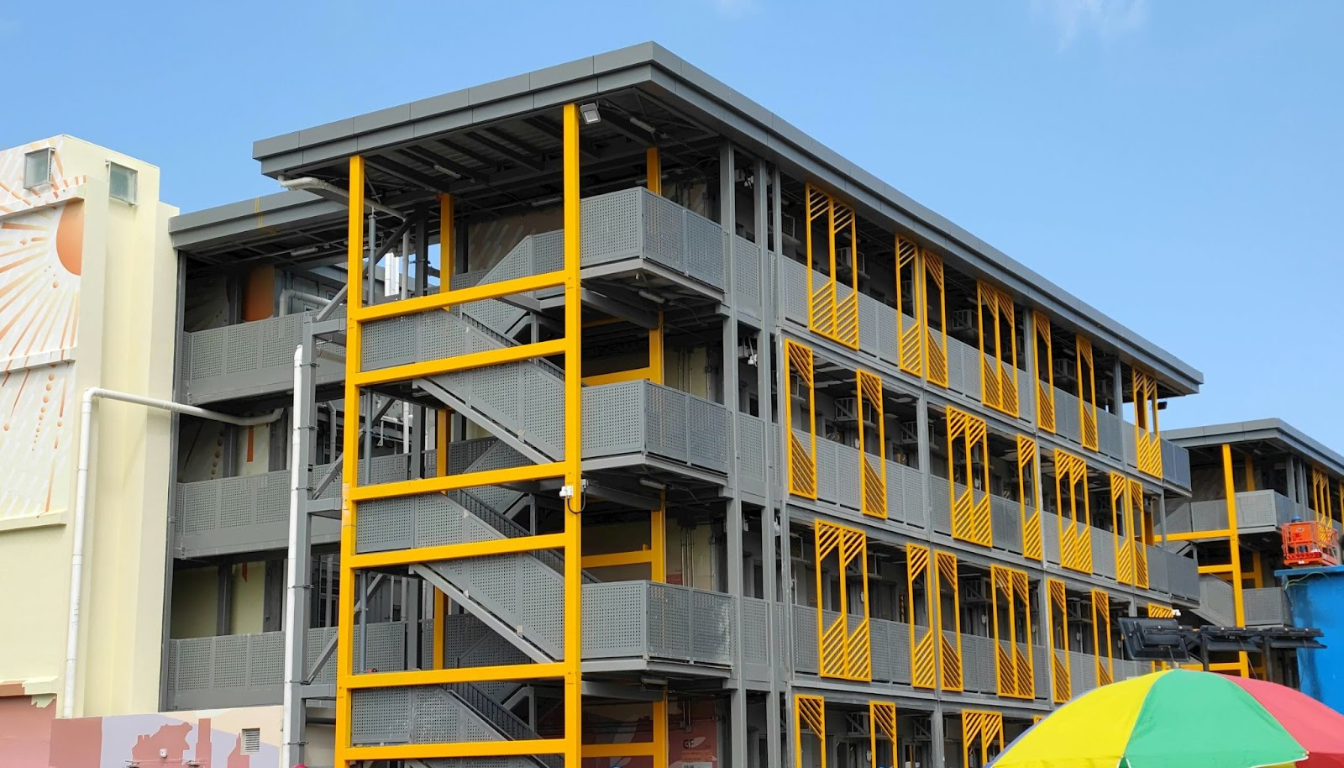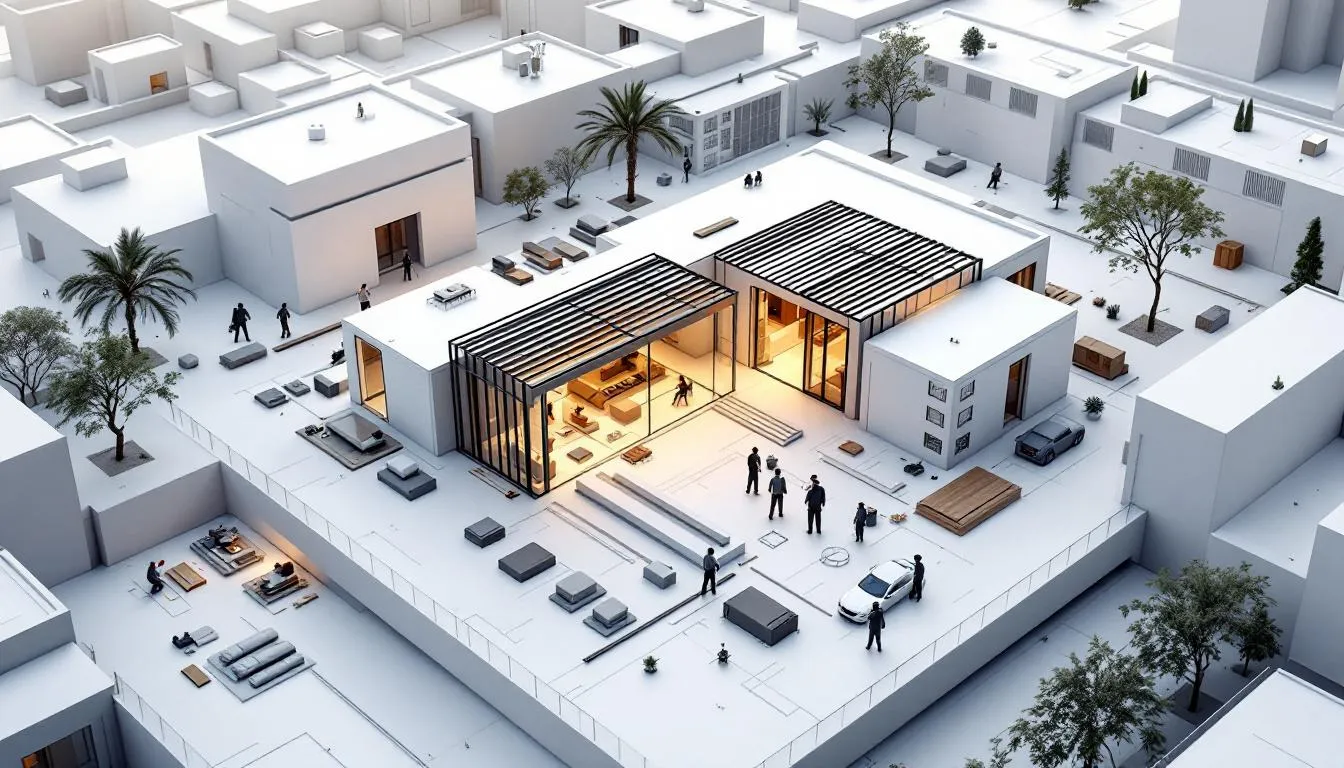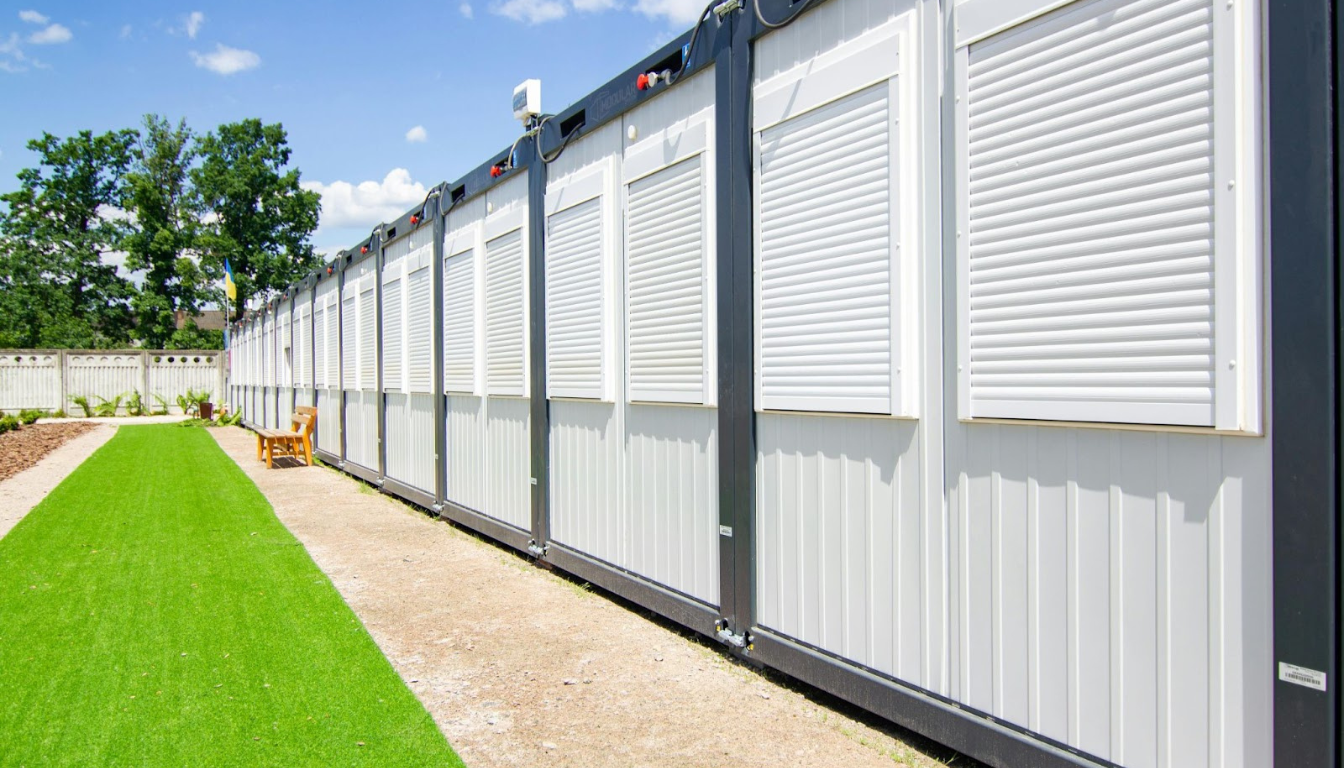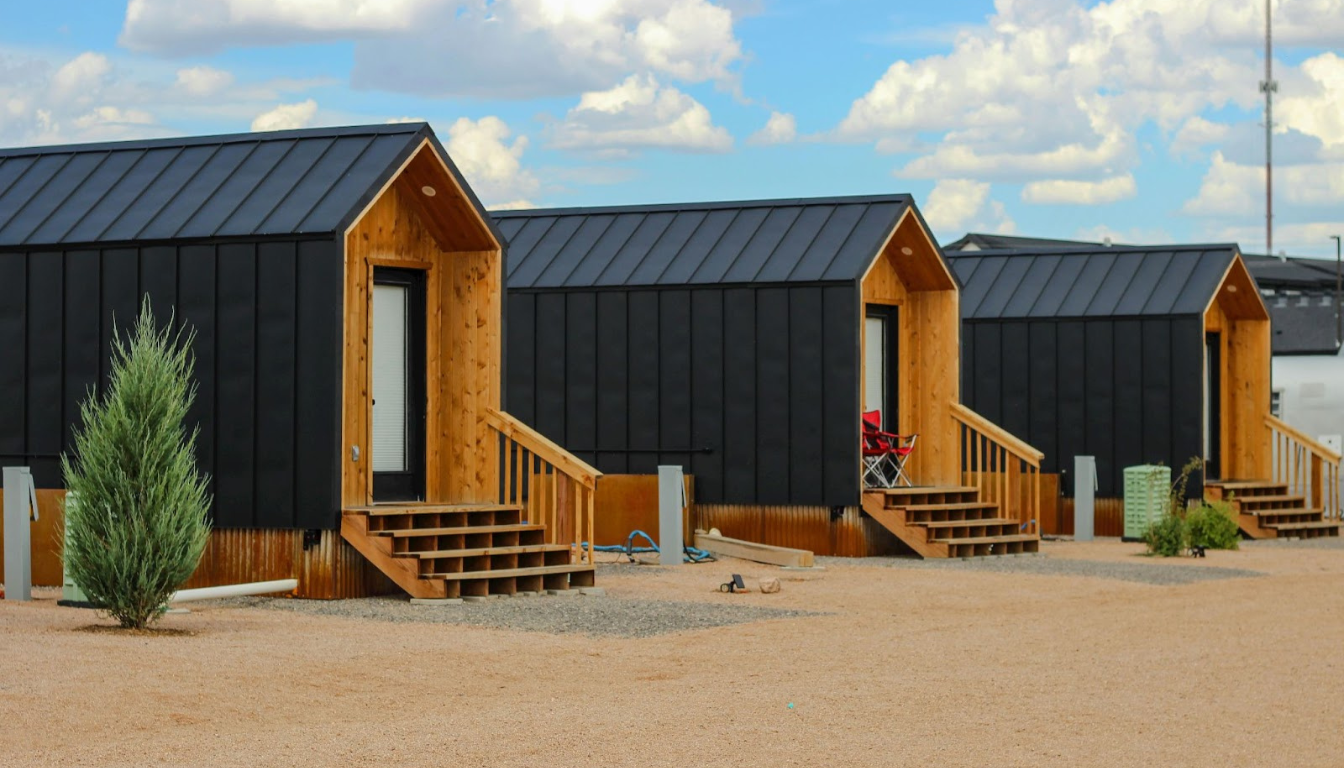Top Benefits and Costs of Offsite Construction for Corporate Retreats

Offsite construction for corporate retreats offers a faster, cost-effective, and high-quality alternative to traditional building methods. One key difference between offsite construction and traditional building methods is that offsite construction involves manufacturing modules in a factory, while traditional methods build everything on-site. By manufacturing building modules in a controlled factory setting and then assembling them on-site, companies can minimize delays, control costs, and ensure quality. This article will explore the benefits, costs, and key features of offsite construction, making it an attractive option for corporate retreats.
Key Takeaways
- Offsite construction significantly reduces build times for corporate retreats, often completing projects in 3-4 months compared to traditional methods.
- Cost benefits include reduced labor and material waste, with modular homes typically costing 20% less than site-built options, and potential energy savings aligning with sustainability goals.
- High-quality materials, energy efficiency, and customizable designs enhance the appeal and functionality of prefab cabins, making them ideal for corporate retreat settings.
- Expect costs, timelines, and outcomes to vary depending on factors such as permits, land preparation, materials, and customization when planning offsite construction for corporate retreats.
Understanding Offsite Construction for Corporate Retreats

Offsite construction, also known as modular construction, is revolutionizing how we build corporate retreat spaces. This method involves creating building modules in a factory setting, which are then transported and assembled at the final location.
The main elements involved in offsite construction for corporate retreats include the overall floor plan, square footage, and any custom additions or features tailored to the needs of the organization.
What is Offsite Construction?
Offsite construction refers to building processes that occur away from the final site, often in factories. The process involves:
- Manufacturing components under controlled conditions, ensuring higher quality and consistency.
- Transporting the completed modules to the construction site.
- Integrating the modules at the construction site, ready for final assembly.
This method differs significantly from a traditional site built home, where construction occurs entirely on-site. Moving the bulk of the construction process indoors mitigates weather-related delays and enhances overall efficiency.
Benefits of Offsite Construction for Corporate Retreats
One of the main advantages of offsite construction is the significant reduction in construction time. Projects can be completed much faster compared to traditional methods, allowing your corporate retreat to be up and running in no time. This speed is due to the parallel work processes in offsite construction, where site preparation and module construction occur simultaneously.
Moreover, offsite construction minimizes labor needs and reduces material waste, leading to cost savings. In the long run, these efficiencies can result in even greater savings and sustainability compared to traditional building methods. The controlled factory environment ensures that projects are less susceptible to delays caused by adverse weather conditions, further streamlining the planning process for corporate retreats.
Common Misconceptions
Despite its many benefits, offsite construction is often misunderstood. A common myth is that it produces lower quality results compared to traditional methods. However, the reality is that modular buildings often meet or exceed standard building codes and can be of superior quality due to the controlled manufacturing environment.
Another misconception is that a modular home is only suitable for temporary structures. In fact, they can be designed for permanent use with lifespans comparable to traditional constructions. Offsite construction is also flexible enough to accommodate on-site modifications, debunking the myth that it lacks versatility.
Cost Breakdown of Offsite Construction

Understanding the costs involved in offsite construction is crucial for effective budget management and price management.
Pricing for offsite construction projects includes various components such as delivery, installation, and optional upgrades, providing a comprehensive view of the total cost.
Breaking down the costs of offsite projects includes initial, construction, and delivery and installation expenses.
Initial Costs
Initial project costs can include site surveys to assess the land’s suitability for construction. Leasing options are available to reduce initial financial burdens, allowing businesses to utilize equipment or property without immediate purchase. This flexibility helps companies manage their cash flow effectively while investing in offsite construction.
Many businesses may also use a construction loan to finance initial costs, which can impact both the overall budget and project timeline.
Additionally, implementing specific financial strategies, such as integrating project-related costs into a single financing option, can enhance budget management for offsite construction projects. Leasing modular buildings also offers a flexible financial solution, minimizing upfront expenditures while acquiring necessary spaces.
Construction Costs
Labor costs are significantly reduced when modular homes are built in a factory environment due to several factors:
- The controlled setting allows for more accurate budgeting, as projects are completed with fewer on-site uncertainties.
- Prefabrication reduces material waste.
- Labor needs are optimized, leading to lower overall costs.
Effective budget management requires a clear understanding of these construction costs. Modular homes typically use less costly materials and fewer labor hours, making them a more affordable option compared to site-built homes. This efficiency translates into cost savings and better financial planning for corporate retreats.
Construction costs for modular homes are often estimated on a per square foot basis, allowing for easier comparison of pricing and helping to account for differences in foundation type, complexity, and customization options.
Delivery and Installation Costs
Transportation costs can vary significantly based on the distance from the manufacturing facility to the site location. Planning for these costs early in the project helps avoid budget surprises. Installation costs typically include the labor required to assemble the prefab cabins and any necessary equipment rentals for the assembly process.
A proper foundation is essential for modular buildings, as it secures the structure to the land, ensures safety, and meets local building codes. Foundation costs can also have a significant impact on the overall project budget, so it is important to consider them during the planning phase.
Considering potential additional costs during transportation and installation, such as site accessibility challenges, flooring is important. Proper planning and budgeting for these factors will ensure a smooth and cost-effective installation process.
Key Features of Prefab Cabins for Corporate Retreats

Prefab cabins offer unique and personalized living spaces, making them ideal for various corporate retreat themes, including a dream cabin experience with wood and amish built cabins. Log cabins are also a popular choice for a house, including tiny homes.
This section will explore the high-quality materials, energy efficiency, and customizable designs that make prefab cabins a top choice for corporate retreats. Choosing the right floor plan is essential, as it can significantly impact both the functionality and cost of prefab cabins for corporate retreats.
High-Quality Materials
Modular homes are constructed to meet high-quality material standards, ensuring durability and comfort for corporate retreats. Prefabricated modular cabins are made from high-quality, durable, and sustainable materials, enhancing their appeal and longevity in modern homes.
Using sustainable materials not only boosts the durability of the cabins but also positively contributes to the environment. High-quality materials are essential in offsite construction to ensure the long-term success and satisfaction of corporate retreat spaces.
Energy Efficiency
Energy-efficient designs in offsite construction lead to reduced energy consumption during the operation of buildings. These designs often include high-performance insulation and energy-efficient windows to minimize heat loss, resulting in significant savings on utility bills over time.
Investing in energy-efficient modular buildings not only reduces operational costs but also aligns with corporate sustainability goals. This makes prefab cabins a cost-effective and eco-friendly choice for corporate retreats.
Customizable Designs
Customization options for premium cabins include features like:
- Pre-wired electrical systems
- Full cabinet installations
- Countertops
- Plumbing fixtures
- Tankless hot water heaters
In addition to these features, the square footage of a cabin can be customized to meet the needs of different corporate retreat groups, allowing for both small and large gatherings.
This flexibility allows companies to customize their business retreat room space to specific needs and style preferences.
Cabins like the Antelope are designed to accommodate larger groups, making them ideal for corporate retreats aimed at fostering teamwork and collaboration. Customizable designs in offsite construction provide the versatility required to create a unique and effective retreat environment.
Comparing Offsite Construction to Traditional Methods

Offsite construction offers many advantages over traditional building methods. This section will compare the speed and efficiency, cost-effectiveness, and quality control of offsite construction to traditional methods.
Speed and Efficiency
Offsite construction allows for the completion of modular homes in just 3-4 months, significantly faster than traditional construction methods. This speed is achieved by building modules in a factory setting, which streamlines the construction process and reduces overall build time compared to stick-built homes that are constructed entirely on site. Assembling modular sections on-site can take only several hours to several days, further enhancing the efficiency of the construction process.
The ability to assemble prefab cabins quickly in hard-to-reach locations makes offsite construction an appealing option for corporate retreats. This efficiency not only saves time but also ensures that retreats can be established without the delays and uncertainties often associated with traditional construction methods.
Cost Effectiveness
Modular homes are generally less expensive than traditional building methods, with modular homes typically being 20% lower than stick-built homes. This cost savings is due to:
- Reduced labor hours required in a factory setting
- Use of less costly materials
- Reduced interest costs accrued during construction, further enhancing cost-effectiveness, making modular homes a cheaper option.
Energy-efficient designs in offsite construction also contribute to lower overall energy needs for heating and cooling, which can result in significant savings over the lifespan of the building. Better insulation and air sealing in modular buildings lead to greater energy efficiency and reduced operational energy costs.
These factors make modular construction a financially savvy choice for corporate events. A key factor is the efficiency of the modular approach.
By streamlining the building process, offsite construction helps companies save money throughout the entire project.
Quality Control
Quality control is enhanced in offsite construction due to several factors:
- The manufacturing environment minimizes on-site errors.
- Construction processes are more standardized in a controlled factory setting.
- Components are built to precise specifications, ensuring higher quality and consistency.
- Regular inspections during factory production further enhance the overall quality of the materials and the final product.
This rigorous quality assurance process ensures that the prefab cabins used for corporate retreats meet high standards of durability and comfort. The combination of a controlled environment and regular inspections leads to superior quality assurance for corporate retreat structures.
Planning Your Corporate Retreat with Offsite
Planning a corporate retreat with offsite construction involves setting clear goals, selecting the right location, and working closely with offsite providers. This approach ensures that the retreat is tailored to your needs and delivered efficiently.
Be sure to account for any necessary permits, as permit requirements and costs can vary depending on your location and the scope of your project.
Setting Goals and Budget
Establishing clear objectives for the retreat ensures that all planning efforts are focused and meaningful. Clearly defined objectives help align the purpose of the retreat with budgetary constraints, ensuring that resources are allocated effectively. Collaborating with leadership helps define a realistic budget per person for the retreat, making it easier to plan activities and accommodations.
The location should reflect the retreat’s goals, ensuring it enhances participant engagement and productivity. Setting clear goals and establishing a budget helps create a focused and effective retreat that meets your corporate needs.
Selecting the Right Location
Choosing the right location for your corporate retreat involves considering several factors, including the number of attendees, logistical details like parking, and the appeal of natural attractions. Urban locations offer convenience, while remote venues can foster deeper team bonding and focus.
Transportation costs for modular homes can vary greatly depending on the distance from the factory to the site. An ideal location for a retreat is often near natural attractions, which can enhance the experience for participants and align with the retreat’s goals.
It is also important to ensure that your chosen location complies with local building codes, as modular homes must meet these standards for safety and quality.
Working with Offsite Providers
Negotiating inclusions with your chosen venue can help streamline costs and enhance the retreat experience. Working closely with offsite construction providers ensures that your specific needs are met, from design to delivery and installation. Inspections and on-site work can add time to the overall construction process for modular homes, so it’s essential to plan accordingly.
By partnering with experienced offsite providers, you can ensure that your corporate retreat is delivered on time and within budget, providing a seamless and hassle-free planning experience.
Case Studies of Successful Corporate Retreats Using Offsite Construction

Real-life examples of successful corporate retreats using offsite construction illustrate the practical benefits and outcomes of this innovative approach.
These case studies highlight how offsite construction can meet diverse corporate needs effectively. Each case study also considered the total cost of offsite construction to provide a comprehensive understanding of all expenses involved.
Example 1: Tech Company Retreat
A tech company aimed to create an innovative retreat for team-building and brainstorming. Offsite construction provided modern and flexible meeting spaces that enhanced the creativity of their team to construct new ideas that were created on land.
The rapid assembly and adjustment of spaces accommodated their dynamic requirements, ultimately leading to improved collaboration and innovative thinking among team members. This example demonstrates how offsite construction can support the unique needs of tech companies seeking to foster creativity and teamwork.
Example 2: Wellness Retreat
The wellness retreat focused on enhancing mental health and relaxation through immersive experiences. Offsite construction allowed for faster project completion, meaning the retreat facilities were ready sooner for guests.
These facilities could also be used for vacation purposes, making them ideal for guests seeking a relaxing vacation experience.
The retreat included wellness programs such as yoga and meditation sessions, facilitated by the serene and thoughtfully designed outdoor spaces. Participants reported increased satisfaction and relaxation levels due to the quality of the retreat environment, which was enhanced by energy-efficient and sustainable designs.
Example 3: Leadership Training Camp
The leadership training camp was designed to cultivate skills and foster teamwork among participants. Prefab cabins provided a unique immersive experience, allowing participants to fully engage in the training activities away from distractions, instilling a sense of pride.
The use of prefab cabins not only supplied comfortable lodging but also allowed for quick assembly and setup, enhancing the camp’s operational efficiency. Overall, the leadership training camp achieved its goals effectively while offering a cost-efficient and flexible solution.
Environmental Impact of Offsite Construction
Offsite construction provides notable environmental benefits through energy efficiency, waste reduction, and less on-site disruption compared to traditional building methods.
This section will explore these impacts in detail.
Reduced Waste
Offsite construction can decrease construction waste by as much as 90% due to precise prefabrication in controlled environments. Manufacturing components in a controlled environment allows for precise cutting, resulting in less waste compared to traditional methods.
Building in controlled factory settings also allows for recycling and efficient material use, producing up to 90% less waste than conventional methods. This reduction in material waste contributes to overall cost savings and a more sustainable construction process.
Energy Efficiency
Offsite construction often incorporates advanced insulation materials that enhance energy performance and reduce overall energy consumption. These energy-efficient designs lead to lower utility expenses and align with corporate sustainability goals.
By investing in energy-efficient modular buildings, companies can achieve significant savings on operational costs while reducing their environmental impact. This makes offsite construction a smart choice for environmentally conscious corporate retreats.
Sustainable Materials
The use of high-quality, eco-friendly materials in offsite construction enhances durability and provides comfort to corporate retreat spaces. Sustainable materials minimize waste by allowing for precise pre-manufacturing, resulting in less excess and scrap materials.
Energy-efficient designs within offsite construction lead to lower long-term operational costs and reduced environmental impact. This commitment to sustainability makes offsite construction an attractive option for companies looking to reduce their carbon footprint.
Financing Options for Offsite Construction Projects
Various financing avenues exist for businesses venturing into offsite construction, each catering to different project needs and budgets.
This section will explore loans, grants, leasing options, and corporate financing strategies to support your offsite construction project.
It's important to note that modular home prices can vary significantly depending on the financing options chosen and the overall scope of the project.
Loans and Grants
Many organizations offer financial assistance in the form of loans or grants specifically aimed at supporting offsite construction initiatives. Government loans and grants may be accessible for offsite construction projects, promoting innovation and efficiency.
Financing options for modular construction are often similar to those available for manufactured homes, with both types of housing benefiting from specialized loan programs and incentives.
Customized credit facilities designed for modular construction can alleviate funding challenges for developers and manufacturers involved in such projects. These financial supports can help businesses manage costs effectively while investing in offsite construction.
Leasing Options
Leasing options provide businesses the ability to utilize offsite construction without the full financial burden of ownership. Leasing agreements often lead to lower initial costs compared to traditional purchasing methods.
By opting for a lease, companies can preserve capital that can be allocated to other aspects of the corporate retreat. Leasing also provides the flexibility to upgrade or change facilities as corporate needs evolve over time.
Corporate Financing Strategies
Effective corporate financing strategies may include forming partnerships that share financial risks among stakeholders. This approach can help manage costs and ensure the successful completion of offsite construction projects.
Summary
Offsite construction offers a range of benefits for corporate retreats, including reduced costs, faster construction times, and enhanced quality control. By utilizing high-quality materials, energy-efficient designs, and customizable options, offsite construction can create unique and effective retreat spaces.
As you plan your next corporate retreat, consider the environmental impact and financing options available with offsite construction. Platforms like Offsite specialize in helping companies plan and execute high-impact retreats by offering expert guidance, venue sourcing, and tailored logistics support. As you plan your next corporate retreat, consider the environmental impact and financing options available with offsite construction. With its many advantages, offsite construction is a smart and sustainable choice for creating the perfect corporate retreat.
FAQs
- What is offsite construction?
Offsite construction is a method where building components are manufactured in a factory setting and then transported to the final site for assembly. This approach enhances efficiency and can lead to quicker project completion.
- What are the main advantages of offsite construction for corporate retreats?
The main advantages of offsite construction for corporate retreats are reduced construction time and cost savings, along with high-quality materials and energy-efficient designs that can be tailored to specific needs. This approach also minimizes delays caused by weather, ensuring a smoother project timeline.
- How does offsite construction compare to traditional methods in terms of cost?
Offsite construction is typically more cost-effective than traditional methods, often resulting in savings of around 20% due to reduced labor hours, lower material costs, and energy-efficient designs.
- What financing options are available for offsite construction projects?
For offsite construction projects, financing options such as loans, grants, leasing agreements, and customized credit facilities are available. These strategies can effectively help manage project costs.
You may also like
Unique spaces for your next offsite
Find distinctive venues for your upcoming corporate retreat.
Stay Updated with Our Insights
Get exclusive content and valuable updates directly to you.







